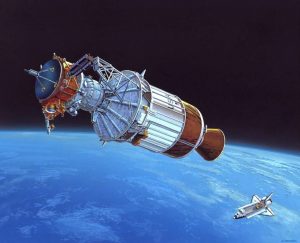- This topic is empty.
-
AuthorPosts
-
12/05/2025 at 15:23 #4779
In an era marked by rapid urbanization and environmental concerns, the quest for the most efficient form of transportation has never been more critical. As we delve into this multifaceted topic, we must consider various dimensions, including energy consumption, speed, cost-effectiveness, and environmental impact. This discussion will explore several transportation modalities, assessing their efficiency through a comprehensive lens.
1. Defining Efficiency in Transportation
Before we can identify the most efficient form of transportation, we must first define what efficiency entails in this context. Efficiency can be measured in several ways:
– Energy Efficiency: The amount of energy consumed per passenger mile or ton mile.
– Time Efficiency: The speed at which a mode of transport can complete a journey.
– Cost Efficiency: The financial implications for both providers and users.
– Environmental Impact: The carbon footprint and sustainability of the transportation method.2. Analyzing Current Transportation Modes
A. Public Transit Systems
Public transportation, including buses, subways, and trams, often emerges as one of the most efficient options in urban settings.
– Energy Efficiency: Buses and trains can transport a large number of passengers simultaneously, significantly reducing per capita energy consumption.
– Cost Efficiency: Public transit systems typically offer lower fares compared to private vehicle ownership, especially when considering fuel, maintenance, and parking costs.
– Environmental Impact: By reducing the number of individual cars on the road, public transit contributes to lower greenhouse gas emissions.B. Bicycles and E-Bikes
Bicycles, including electric variants, are increasingly recognized for their efficiency.
– Energy Efficiency: Bicycles require minimal energy input, and e-bikes can extend range without significant energy costs.
– Health Benefits: Cycling promotes physical health, reducing healthcare costs in the long run.
– Environmental Impact: Bicycles produce zero emissions, making them an environmentally friendly choice.C. Electric Vehicles (EVs)
Electric vehicles represent a significant shift in personal transportation.
– Energy Efficiency: EVs convert over 60% of electrical energy from the grid to power at the wheels, compared to 20% for conventional gasoline vehicles.
– Cost Efficiency: While the initial purchase price can be higher, lower operating costs and government incentives can make EVs more economical over time.
– Environmental Impact: When charged from renewable energy sources, EVs can drastically reduce carbon footprints.D. High-Speed Rail
High-speed rail systems are a game-changer in intercity travel.
– Time Efficiency: Capable of speeds exceeding 200 mph, high-speed trains can significantly reduce travel time between major cities.
– Energy Efficiency: Trains are generally more energy-efficient than planes and cars, especially when considering the number of passengers transported.
– Environmental Impact: High-speed rail systems produce lower emissions per passenger compared to air travel.3. The Future of Transportation Efficiency
As technology advances, the landscape of transportation is evolving. Innovations such as autonomous vehicles, hyperloop systems, and drone delivery services are on the horizon. Each of these technologies promises to enhance efficiency in unique ways:
– Autonomous Vehicles: By optimizing driving patterns and reducing traffic congestion, self-driving cars could improve energy efficiency and safety.
– Hyperloop Systems: This proposed mode of transportation could revolutionize long-distance travel, offering speeds comparable to air travel with a fraction of the energy consumption.
– Drone Delivery: For last-mile logistics, drones can provide rapid delivery solutions, reducing the need for traditional delivery vehicles.Conclusion
Determining the most efficient form of transportation is not a straightforward task; it requires a nuanced understanding of various factors, including energy use, cost, speed, and environmental impact. While public transit, bicycles, electric vehicles, and high-speed rail each offer unique advantages, the optimal choice often depends on specific circumstances, such as location, purpose, and infrastructure.
-
AuthorPosts
- You must be logged in to reply to this topic.


